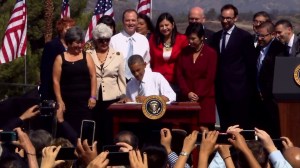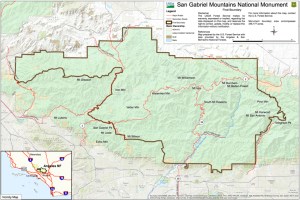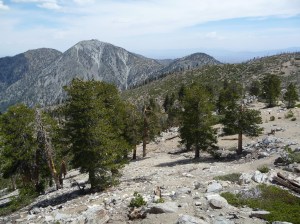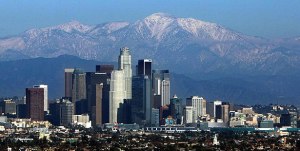More than 540 square miles of the San Gabriel Mountains became a national monument Friday under a controversial executive move from President Barack Obama that will increase protections in an attempt to address crowding and pollution in the heavily used area.

Obama signed a proclamation declaring the national monument during an early afternoon ceremony at Frank G. Bonelli Regional Park in San Dimas. He put the move in the context of past federal government actions to preserve wild lands such as Yosemite National Park.
“I can think of no better way to honor our past and protect our future than by preserving the San Gabriel Mountains,” Obama said.
The new San Gabriel Mountains National Monument includes 346,177 acres — stretching from Telegraph Peak, north of Rancho Cucamonga, to rugged areas of the Angeles National Forest adjacent to Santa Clarita.
It covers about half of the Angeles National Forest, which sees more than 4 million visitors annually, according to the White House. About 4,002 acres of the national monument are within the neighboring San Bernardino National Forest.

The area is within a 1 1/2-hour drive of 15 million people, the White House stated, and it provides Los Angeles County with 30 percent of its drinking water.
The land — which includes popular hiking, camping and other recreation areas — will be managed by the U.S. Forest Service.
It provides habitat for native fish, plants and animals as well as threatened or endangered species such as the California condor, mountain yellow-legged frog, arroyo chub fish and Nelson’s bighorn sheep, according to the Forest Service’s new website for the monument. More than 8,000 years of human history are in evidence in more than 600 archaeological sites within the monument, the Forest Service states.

Supporters of the plan hope the new designation will free up federal funding to address graffiti, trash and pollution in areas that see the heaviest use. The White House and its backers say the change will improve access for visitors and create new recreation opportunities in a region that is among the most “park-poor” in the country.
At Friday’s event, Obama in part framed the national monument designation in terms of social justice for those who have little access to natural, green spaces.
“We heard from the community that for a lot of urban families this is their only big, outdoor space,” Obama said.
He called the designation the first step in bringing together the Forest Service, philanthropists and local communities to improve access to the mountains.
“It’s not enough to have this awesome national wonder within your sight; you have to be able to access it,” Obama said. “Right now campgrounds are crowded, parking lots are tight. There haven’t been enough resources to manage and maintain this area the way it deserves.”

Some heavily trafficked areas that are close to densely populated parts of the San Gabriel Valley will be excluded from the monument, including Echo Mountain and Mount Baldy. Large swaths on the eastern edge of the mountain range were excluded in reaction to opposition to the monument designation in San Bernardino County, according to the Los Angeles Times.
Opponents have said they’re worried that the new designation will affect private property rights, drinking water access and county services such as flood control. They also complain that the proposal was fast-tracked after a plan from Rep. Judy Chu of Monterey Park to create a national recreation area failed to gain traction in Congress.
About 150 protesters gathered at Chu’s office in Pasadena to protest Monday, according to Los Angeles County Supervisor Mike Antonovich, who says the national monument “threatens access” to the national forest.
The president used his authority under a 1906 federal law, the Antiquities Act, to create the national monument. The designation Friday marked the 13th national monument that Obama has either created or expanded, for a total of 260 million acres or land or water.
At Friday’s news conference, the National Forest Foundation planned to announce a $3 million San Gabriel Mountains National Monument Fund to jumpstart cleanup and habitat restoration projects.





